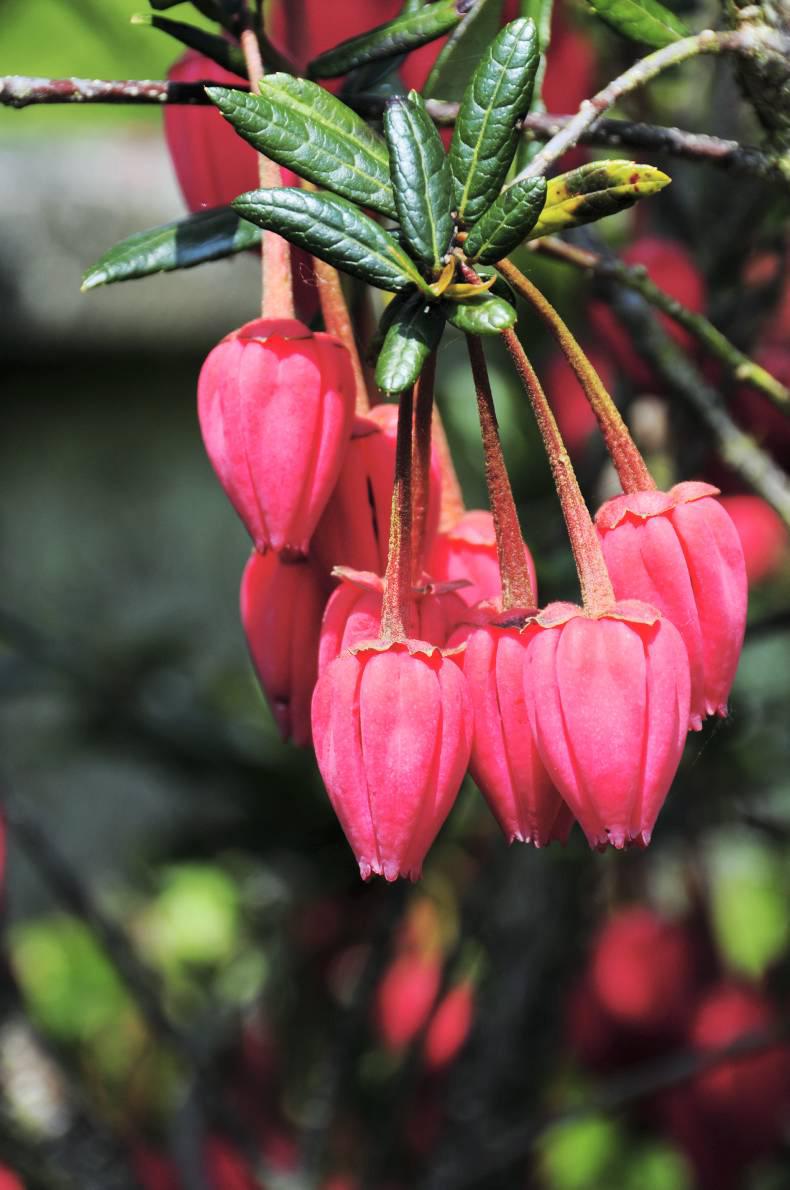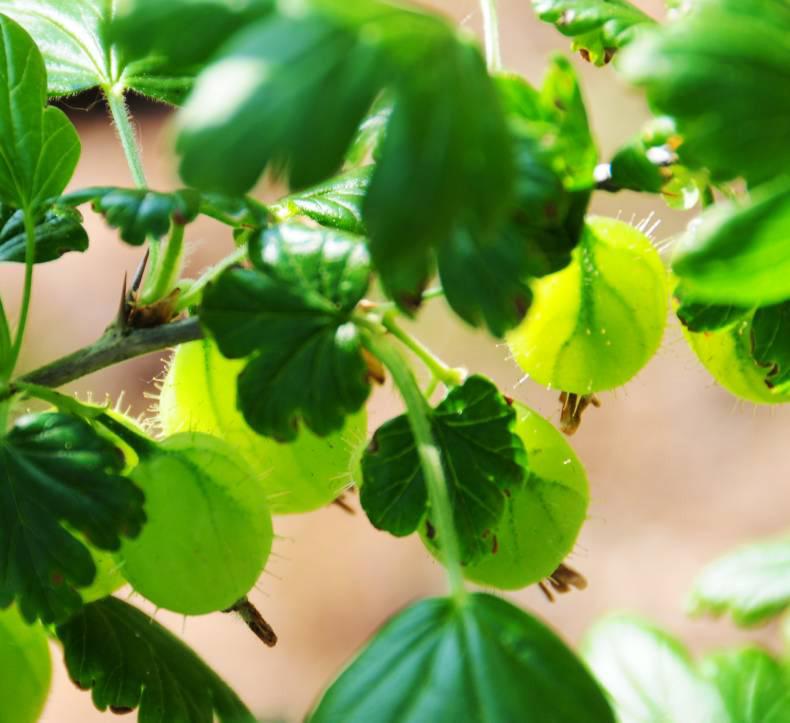The lantern tree is very decorative in late spring and early summer, producing dangling, waxy red, lantern-like flowers against a backdrop of dark-green leaves. The flowers resemble Chinese lanterns in shape and the plant is sometimes called Chinese lantern tree.
However, it comes from Chile and so it is called Chilean lantern tree, Crinodendron hookerianum. It was formerly known as Tricuspidaria, and it is still given that name occasionally. It comes from mixed woodlands in Chile where it is an understory plant. Its dark-green leaves are evergreen and capable of tolerating a fair degree of shade.
The flowers are heavy and sturdily made, hanging in clusters and shedding pollen at the mouth. If a branch carrying flowers is tapped with a finger, the flowers often release drops of sweet, watery nectar. But, despite the nectar, the flowers are not much visited by insects.
The natural pollinator in its native land is the hummingbird, and the structure of the flower has evolved to favour this pollinator. The closed bell shape allows hummingbirds to access the nectar from below with their long tongues, while pollen falls on their feathers to be carried to the next flower.
Strangely, the lantern tree is probably less well known these days than it was three or four decades ago. In those days, it was commonly grown in gardens, but the advent of smaller garden size has seen its popularity fall, as it takes up too much space.
Often sold as a shrub, this plant is capable of making a large bush 8m or so in height, perhaps more in ideal conditions. Although it can be pruned, it was generally too big to be treated as a shrub in small gardens. However, it could be treated as a small tree with a main stem or several stems pruned up. In a country garden there is a better chance of having the space to let it grow unhindered.
There is another species called Crinodendron patagua, a lovely white-flowered form. The flowers are not lantern-like as the red-flowered kind, which draw together at the mouth of the flower. The white kind has more open flowers, split at the sides and dangling like bells.
The reason for the different shape of the flowers is that this species is insect-pollinated, the flatter, more open structure allowing insect access. Its foliage is lighter, more airy and the individual leaves are more rounded. It can grow larger than the red kind, but this species is not much seen in gardens or for sale. It flowers in late summer and autumn and its flowers are scented.
Like Chilean plants, such as fuchsia and escallonia, they can be damaged by hard frosts. However, it takes a very severe frost to kill a mature tree; mostly they suffer a little surface damage. In most years, except in colder inland parts, they are not damaged at all. They are quite hardy in coastal counties.
The white-flowered kind makes a lovely plant in a pot for a conservatory, as it will flower on small plants. The shoots are trimmed back in spring to keep it to a small size, the flowering shoots developing during the summer.
They like good fertile soil, the white-flowered kind enjoying drier ground than the red kind. Both prefer acid soil but grow in any soil if there is lots of humus dug in or used as mulch.
Prune off low branches to get a tree-like shape, or prune hard in March or April to reduce the size of an overgrown plant. CL
>> This week
Flowers
There were some cold nights in May and not much chance to plant out bedding plants or to pot up containers. In some parts of the country, significant damage was done by hail. There is still time. Water the young plants immediately after planting out and every few days, until they are actively growing, unless there is heavy rain. A liquid feed will encourage rapid establishment.
Fruit, vegetables and herbs
Vegetable sowing was delayed, but there is still time to repeat-sow vegetables sown earlier, such as lettuce, peas and carrots. Thin out vegetables that have reached suitable size, and control weeds early. There is still time to sow winter and savoy cabbage varieties for winter and early spring use. Plant out tender vegetables such as sweetcorn, outdoor tomatoes and runner beans.
Lawns
There was good grass growth after some warm days and grass growth will be vigorous for a few weeks more as its tries to flower. Continue regular mowing and keep the edges around kerbs and flower beds or borders trimmed to maintain a neat appearance. If you wish to control lawn weeds, good results will be achieved with lawn weedkillers at this time of year.
Trees, shrubs and roses
Prune early summer shrubs as they go out of flower, if they are too big or need shaping. It is best to thin out shrubs rather than shorten back every branch, shortening some of them. There is still time to prune evergreen trees, both conifers and broad-leaved types, to give them growing time to recover. Spray roses against blackspot disease, especially in the damper parts of the country.
Greenhouse and House plants
Plant out tomatoes, chilli peppers, cucumbers and sweet peppers as soon as possible, if not already done because these need to make rapid growth now. Lightly tap the flowers of tomatoes to release pollen, especially for the first flowers to get some fruit setting. House plants can be re-potted now. Continue to feed greenhouse plants strongly and to water them well.
Gooseberries need picking
Gooseberries are ready to be picked from the end of May or early June, when they are about the size of a grape. Of course, they are nowhere near fully grown, but in a home garden, there is no need to maximize yield and some of the fruit can be picked for use. The young fruit is very sour to taste and not many people would eat them raw, but they are excellent for cooking. The best way to pick is to take a few fruit from each branch, effectively thinning the number of fruit, allowing the plants energy to go into the remaining berries.






SHARING OPTIONS